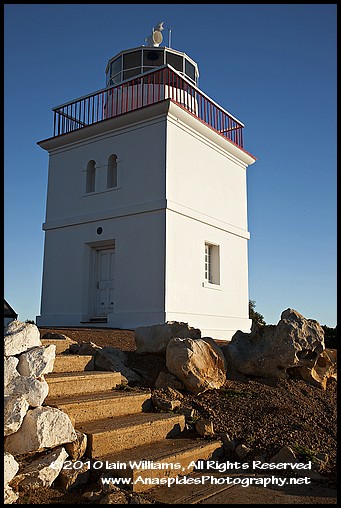Cape Du Couedic Lighthouse - Kangaroo Island
 Tuesday, June 22, 2010 at 3:22PM
Tuesday, June 22, 2010 at 3:22PM  Kangaroo Island boasts several lighthouses which in between observing the animals are well worth a visit. My favourite lighthouse was the lighthouse established on most southern shores of the island adjacent to a large New Zealand Fur Seal colony. Although this lighthouse is not the oldest establishment – the Cape Borda and Cape Willoughby lighthouses were commissioned in 1858 and 1852, it certainly is the most picturesque.
Kangaroo Island boasts several lighthouses which in between observing the animals are well worth a visit. My favourite lighthouse was the lighthouse established on most southern shores of the island adjacent to a large New Zealand Fur Seal colony. Although this lighthouse is not the oldest establishment – the Cape Borda and Cape Willoughby lighthouses were commissioned in 1858 and 1852, it certainly is the most picturesque.
LEFT: The Cape du Couedic Lighthouse located along the southern coastline of Kangaroo Island. Time were tough at the lighthouse in 1911 as indicated by the Log Book.
The Cape du Couedic Lighthouse, the fifteenth lighthouse to be commissioned in South Australia was constructed between 1906 and 1909 after three shipwrecks in the area claimed the lives of 76 souls. The tower itself is comprised of 2000 large pieces of local stone. Due to the lack of a road system, all construction supplies were brought in by boat to a cove 1 km away. The cove offered some protection from the large southerly swell, however, surrounding the cove were steep cliffs. A flying fox powered by a small petrol driven engine was used to ferry stores to the top of the cliff. In addition to the tower and light, three four roomed stone cottages were built for the head lighthouse keeper and his two assistants. The first light used at the lighthouse was manufactured in England by Chance Brothers and ran on kerosene fuel. Resupply was 4 times a year and mail was delivered fortnightly via horseback to the lighthouse staff. The lighthouse sported modern rescue equipment which included rope ladders to scale the cliffs and rocket propelled lines.
 Times were harsh during these early times and it was not unknown for keepers to work exceptionally long hours for weeks at a time with little time off. It was a regular and constant watch to protect passing ships from the treacherous coastline. Three keepers operated the light station and maintained the light. Every two hours the light mechanism had to be manually wound up. The men worked in shifts and were rostered on every day of the week. It's not surprising that from time to time they did not see eye to eye.
Times were harsh during these early times and it was not unknown for keepers to work exceptionally long hours for weeks at a time with little time off. It was a regular and constant watch to protect passing ships from the treacherous coastline. Three keepers operated the light station and maintained the light. Every two hours the light mechanism had to be manually wound up. The men worked in shifts and were rostered on every day of the week. It's not surprising that from time to time they did not see eye to eye.
LEFT: Cape Borda Lighthouse circa 1858. A small canon was used to signal ships that danger was close by when low lying fog obscured the light.
An extract from the Log Book kept at the lighthouse reads:
"Wednesday 13th December 1911
Insubordination of the 2nd keeper
At 9 am 2nd keeper came to me and said, I want a day off. I said it is not granted and I want to get on with the painting at the fox. 2nd keeper then said I am going to take a day off. I then said as Head Keeper you are disobeying my orders. He then said you are no body. he then left the Station. He rejected my advise and the left the station against my wishes, and was absent from the Station without leave for 12 hours - Head Keeper"
Time off and holiday leave is now an expected and precious part pf out lives.
At the lighthouse site is a period photograph of the keeper, his assistants and canine friends. It’s possible to study the location of the people in the image, then position yourself to exactly the same location and stand exactly where they stood. It’s impossible to imagine their thoughts at the time, but certainly they couldn’t not have imaged that I or anyone else would be standing here with a Canon 1D series camera around their neck and a Toyota Landcruiser parked along the way!



Reader Comments